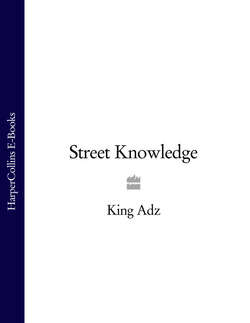Читать книгу Street Knowledge - King ADZ - Страница 9
ASBESTOS
Оглавлениеwww.theartofasbestos.com
A few years ago I bumped into Asbestos while he was busy rubbing down one of his large-scale pieces of someone’s hand on somebody else’s wall in a suburb of Antwerp. I know his work but had never met the guy so I stopped to talk. It’s at moments like this that you know you’re gonna get on with someone and me and Asbestos click like a clockwork orange and that is it: Down for life, and so we hang out for a weekend doing the ‘street-art shuffle’ and generally getting down with some serious hang time and talk shop.
‘My art is defined by the people I meet and interpreting them, it’s about the human form and the environment that I live in’ he says. ‘I like to interact with the space that’s around me and the streets are ripe with opportunities to express yourself. Whether it’s a painting I’ve put up on a wall or a sticker on a lamppost, it all adds to the layers of dirt and personality of a city. My paintings are meant to become part of their environment and the longer they stay up, the more they blend in and integrate with the walls. Hopefully the odd passer-by will see the work and react to it. Positive or negative, any response is good for me — once work is out on the street it’s fair game to be loved or criticized, I release all control of it once I put it out there.’
What I like about Asbestos’ work is that his gallery pieces are all created on discarded material found in the streets, usually around where the show is taking place.
‘All my work is done on found objects, be it wood, plasterboard, metal or anything else I notice in a skip at 3 am. These objects have a history and a personality to them that cannot be faked. They’re a snapshot of the past and part of the fabric of the city which missed their chance of a quiet life in a landfill site.’
His art has evolved in a natural way. He has never jumped on any bandwagon or followed any trends in art whatsoever.
‘In the last year my work has been inspired by the use of the triangle and deconstructionist shapes that I’ve seen in architectural structures. The triangle has now become a central element in my work that ties together the dirty, random, found aesthetic that I’ve always loved with a hard and structured form of the triangle. Thinking about the triangle, I’ve come to realize it’s the coolest of all the shapes — circles and squares have nothing on it.’
The other side of Asbestos’ art is his Lost Series of stickers and posters that advertise random missing objects that are lost but may not need to be found.
‘This series has been a constant in my work over that last few years and provides me with a bizarrely fun outlet to interact with the public. I’m constantly getting amused and bemused mails from people who’ve spotted the stickers to tell me that they’ve found what’s lost or that they hope I find one of my errant objects.’
